Table of Contents
Photographic terminology
Depth of field preview:
In order to see the actual depth of field, some cameras provide a depth-of-field preview button. Press the button to shrink the aperture to a selected size. The scene you see is the same as the scene recorded on the film (memory card) after shooting.
Composition
The name of composition is derived from Western art, and there is a course in Western painting called composition.
The name composition is also called layout or business position in Chinese painting theory. In other words, photographic composition is transformed from the composition of fine art, and we can also simply call it framing.
Whether it is the layout in traditional Chinese painting or the framing in photography, it only involves part of the composition, not the full meaning of the composition. Therefore, it is more scientific and accurate to use the title of composition uniformly.
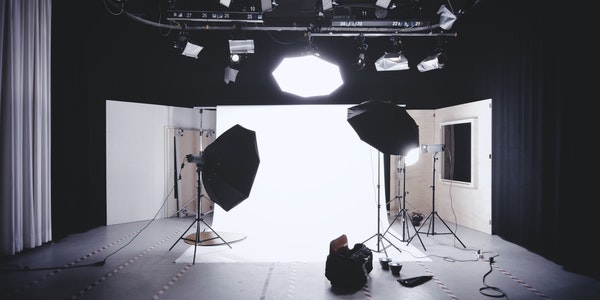
Sensitivity (ISO)
Indicates how fast the photosensitive material is sensitive to light. The unit is expressed by “degree” or “fixed”. For example, “ISO100/21” means a film with a sensitivity of 100 degrees/21 fixed. The higher the sensitivity, the more sensitive the film (that is, the less light is needed to normally take the same photo under the same shooting environment, which is manifested by the ability to use a higher shutter or a smaller aperture).
Color temperature
The different pigments contained in different kinds of light are called “color temperature”. The unit is “K”. The color temperature that we usually use daylight type color negative film can adapt to is 5400K-5600K; the color temperature that light type A and B can adapt to are 3400K and 3200K respectively. Therefore, we have to choose different types of film according to the subject and environment, otherwise there will be color cast (unless color filters are used to correct the color temperature).
Understanding white balance
White balance is an extremely important concept in digital cameras. The so-called white balance (English name is White Balance) is the restoration of white objects by digital cameras. Generally, there are multiple modes of white balance, suitable for shooting in different scenes, such as: automatic white balance, tungsten white balance, fluorescent white balance, shadow white balance, etc.
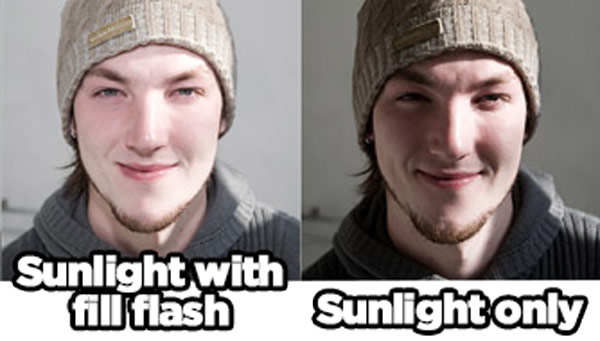
Adjust white balance
Different digital cameras have different ways to adjust the white balance. You need to read the camera manual to learn how to change the white balance setting. Speaking of which, many digital cameras have automatic or semi-automatic white balance modes to help you adjust settings.
Exposure
The process by which light reaches the surface of the film to make the film sensitive. It should be noted that the exposure we are talking about refers to film sensitivity, which is a process that we must go through to get a photo. It often depends on the combination of aperture and shutter, so there is also the term exposure combination. For example, when the shutter is 1/30 sec measured by the light meter, the aperture should be 5.6, so that F5.6 and 1/30 sec are an exposure combination.
Exposure Compensation
Generally, exposure compensation is used in automatic or semi-automatic exposure mode. If it is full manual exposure mode, exposure compensation is rarely used, because the amount of light can also be changed by adjusting the shutter and aperture.
In complex light and high-contrast environments, using automatic exposure or shutter, aperture priority mode, sometimes it is difficult to take care of comprehensively, unable to highlight the subject, and achieve the desired effect. At this time, the photographer needs to manually adjust the equipment accordingly. Exposure parameter adjustment, this is exposure compensation, also known as ±EV. For starters, exposure compensation is generally used in still life and scene shooting situations. This occasion is suitable for calmly adjusting parameters and taking multiple photos with different compensation schemes for selection. However, in a picture with great contrast, it is difficult to take full care of the exposure compensation, and it is easy to lose sight of the other.
Glossary
- Light ratio
Refers to the light-receiving ratio of the dark side to the bright side of the subject under the lighting environment. The light ratio is of great significance to the contrast control of the photo.
- Light position
Refers to the specific position of the lamp in the three-dimensional space. Including surface light, slap light, proscenium pillar light, foot light, proscenium top light, top row condensing light, top row flood light, sky row light, ground row light, side bridge light, flowing light, side light, (hanging cage Bench) Follow the light and so on.
- Focal length
The distance from the center of the lens to the focal point of the light. It is also the distance from the center of the lens to the imaging plane such as the film or CCD in the camera.
- Perspective
The angle formed between the center of the lens and the diagonal ends of the imaging plane is the angle of view of the lens. For the same imaging area, the shorter the focal length, the larger the angle of view.
- Brightness
The brightness of the lens is the amount of luminous flux. Larger caliber and more luminous flux result in greater brightness, and vice versa. The brightness is calculated by multiples of the aperture factor. The brightness is one of the important factors that determine exposure.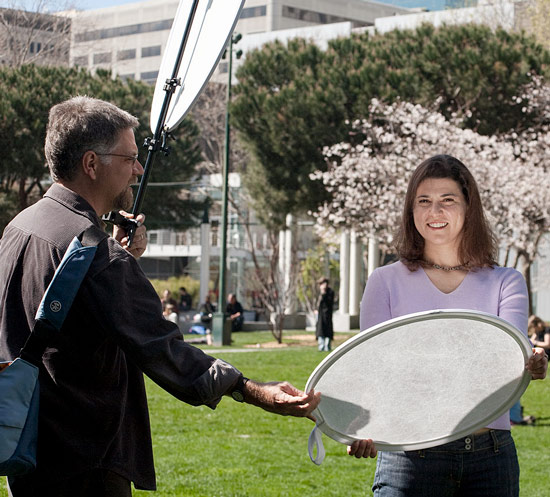
- Three-dimensional
Through the processing of light, shade, and color, the shape of the object’s length, width, and height is shown, and then the three-dimensional space of the subject is reproduced on the plane, and there is a sense of three-dimensional shape. Generally use side light and back light to shoot.
Light commonly used in photography
Light mainly includes four characteristics-the intensity of the light, the nature of the light, the directionality of the light, and the color of the light.
We mainly talk about the directionality of light, which is what we often call forward light, side light, back light and diffuse light.
- Front light
Also called Pingguang. The light is irradiated from the front of the subject, which is characterized by that all the subjects receive the light, the brightness of the light is high, the image is flat, and the color reproduction is good, but the light is relatively flat, and it is difficult to show a three-dimensional effect.
- Side light
The light comes from the side of the subject, which is usually divided into front side light and back side light. The characteristic is that the subject has an obvious three-dimensional effect, and the tonal levels and line contours are more abundant, which can better portray the characters. Appearance characteristics and facial expressions
- Backlight
Also known as “backlight”. The light comes from the back of the subject or obliquely behind it. The characteristic is that the light can draw a beautiful outline for the subject, distinguish the character from the background, and show a strong sense of space.
- Direct light
Also known as “hard light”. Outdoors generally refers to the light emitted by the sun on a sunny day. It is characterized by strong directionality. It can form a strong contrast and three-dimensional effect when irradiated on the subject, which has a relatively tough effect.
- Scattered light
Also known as “soft light”. Outdoors generally refers to sunlight passing through clouds, or being reflected by the ground or walls. It is characterized by no clear directionality, and the relationship between light and darkness is not very obvious when it hits the subject. The intermediate transition levels are rich and the image is softer. This kind of light is ideal for shooting portraits, and the expression of human skin levels is very rich.
photography skills
General photography
Shooting good photography requires certain equipment, patience, and some necessary knowledge.
The so-called “photography” is to take part or all of some scenes to attract the audience with the beauty of the unique characteristics of the object. But when shooting close-up shots, usually because the camera is very close to the subject, it is easy to affect the image quality due to unstable holding of the camera. But you can overcome these problems by buying some appropriate equipment. The following skills need to be mastered to take good photographs:
- Use a tripod
When shooting, the camera must be mounted on a tripod to prevent the camera from shaking. Try to move the camera as close to the subject as possible, and be careful not to introduce unnecessary shadows.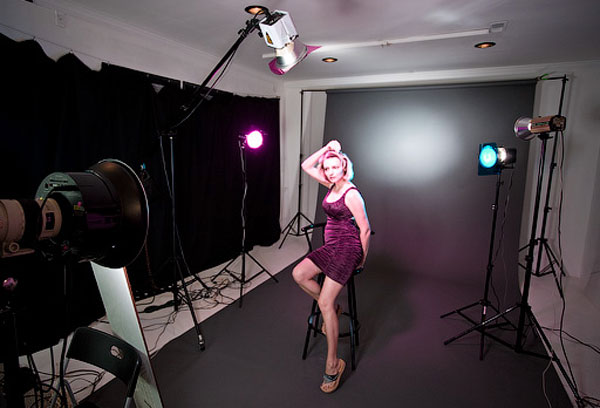
- Focusing track
Although it is not a must-have when shooting, the focus track is a good auxiliary device to help you take good close-up shots. The focus track can make the camera move along the X and Y axis with a very small increment, and can precisely control the position of the camera and the depth of field of the picture. It is very troublesome to use a movable tripod to reach the ideal position.
3, use the shutter release
Even if you have installed the camera on the tripod, if you are not careful when pressing the shutter, it may still shake the camera, so in order to avoid this, I suggest you use a shutter release cable.
4, use a black or colored background
When shooting, when the background of the subject is black, then the captured image can look clearest. You can also use a blurred background, especially when the color of the subject is strong.
- Use reflective cards when necessary
Use a white card or wrap it with a piece of aluminum foil to reflect the light on the subject to illuminate the shadows on the object. It is important to pay attention not to let this card appear in the shooting range.
- must have patience
Sometimes, even a breeze can blur the close-up shots. At this time, you must have patience, and it is best to wait until the wind has passed before shooting. Similarly, when shooting outdoors, the clouds on the sky will cover the sun. It is best to wait until the sun comes out before shooting, so that the photos taken will look brighter and brighter than those taken when it is cloudy.
- Use good composition
The Austrian photographer Iniest Haas has reached the state of not having a sword in his hand and having a sword in his heart for composition. He believes: “The composition lies in balance, and everyone handles balance differently.” Just as martial arts have achieved it. At the highest level, there is no name for the move, and it can only be resolved by one’s own skill. Regarding the position of the camera in the composition. He believes: “The more you can forget your equipment and focus on your subject matter and composition, then the camera is just a continuation of your eyes and has no other meaning.”
Little Jacobs also believes: “The most basic factors of composition are
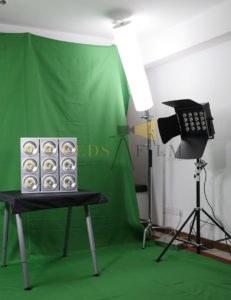
lines, form, texture and the space between these factors. Of course, color is also a factor that cannot be ignored. Converging lines can generally illustrate the perspective relationship, but not All photos must show the depth of perspective. Many outstanding works are flat patterns. The portraits of a certain scene or person in the viewfinder are arranged according to the photographer’s personal feelings. Therefore, how Composition, like how to choose the subject, light, and color, can also become the basis of a photographer’s unique personal style. “In most cases, each photo has one or a group of shapes or forms that play a leading role, and The color, volume, position, and other shapes in the photo all serve the dominant factors. “The contrast in the composition refers to the contrast between big and small, light and dark, near and far, active and passive, smooth and rough, and the intensity and lightness of colors. We must make more use of these opposing factors, through them Make the subject influence the entire composition. For example, if the law of contrast is properly used, the photo will have a powerful charm. “Some people may be gifted with composition.
When the proportion of the subject in the picture is too small, or the blank space of the picture is relatively monotonous (for example, when shooting high-rise buildings in the sunset), you can creatively use underexposure to form a silhouette as the foreground, and use the black silhouette both It can oppress the viewer’s vision to project to the subject, and the black silhouette will not distract the viewer’s attention. We can even use the silhouette as the main frame to form various shapes of square, circle or variation, so that ordinary scenes have a unique sense of form and increase the sense of depth of the picture.
